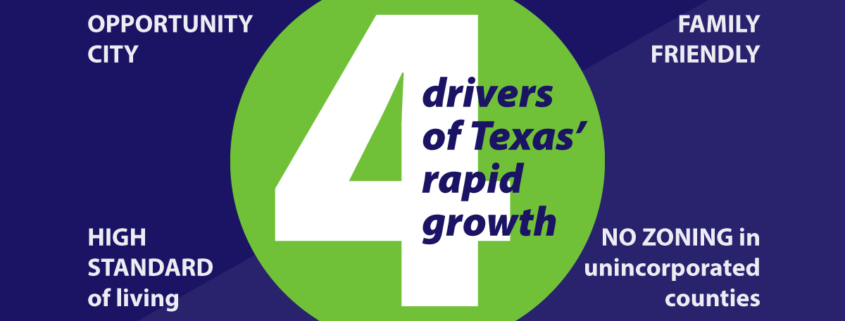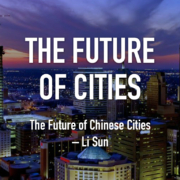Four Drivers of Texas’ Rapid Growth
A few weeks ago I interviewed Washington Post journalist David Byler on the drivers of Texas’ growth, which resulted in an excellent piece he published last week with great analytics, map animations, graphs, and articulation of the drivers: Texas’s population and political power are growing. Here’s why. It concludes with this excerpt:
“Texas has found a simple formula for success — economic opportunity and a low cost of living — and stuck with it. People want simple things: good jobs, affordable housing and room for kids. And they’re willing to move to states that offer them.”
For this post, I wanted to pass along the four growth drivers I shared:
- Texas does not allow zoning/land use regulation in unincorporated counties on the edges of cities, so developers build large, affordable, amenity-rich master-planned communities that attract lots of people using Texas Municipal Utility Districts (MUDs), where a developer can float private bonds to build the infrastructure (streets, utilities) paid back by taxes in that community. It creates a thriving, competitive free market in housing development – much more than you’d see between incorporated cities. The Woodlands is one of the most famous of these, but there are hundreds (Bridgelands and Cinco Ranch as large examples). Here’s a giant one going up near DFW.
- High standard of living, especially shared among immigrant networks: they know what kinds of houses their extended family members can afford all over the country, and they see the newest and biggest at the most affordable price in Texas (combined with job opportunities). They end up choosing Texas when they come to America. (and remember it’s more than just median house prices – it’s what you get for that price: that $635k in California gets a very old, small house – in Texas $278k gets you a larger, newer house)
- Family-friendly: Declining fertility is a problem all over the developed world, most especially in places where housing has grown expensive. If families can’t afford more space, they shrink the family size to compensate. In Texas, it’s very affordable and common to get large 4, 5, even 6 bedroom homes in the suburbs with good school districts, which keeps the birth rate up here.
- Opportunity Cities: This blog post of mine has a fairly good list of attractive elements in Houston specifically and Texas in general.
Head over to Houston Strategies to join the conversation with your comments.
This piece first appeared at Houston Strategies.
Tory Gattis is a Founding Senior Fellow with the Center for Opportunity Urbanism and co-authored the original study with noted urbanist Joel Kotkin and others, creating a city philosophy around upward social mobility for all citizens as an alternative to the popular smart growth, new urbanism, and creative class movements. He is also an editor of the Houston Strategies blog.









